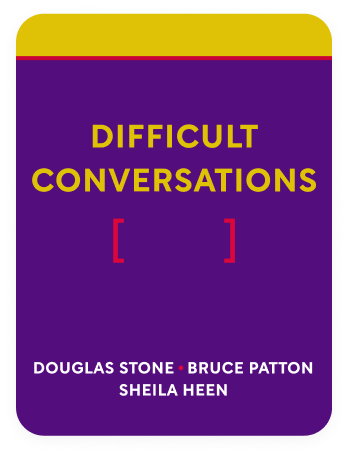

This article is an excerpt from the Shortform book guide to "Difficult Conversations" by Douglas Stone, Bruce Patton, Sheila Heen. Shortform has the world's best summaries and analyses of books you should be reading.
Like this article? Sign up for a free trial here .
What is indirect communication? Why do people opt to convey their message indirectly and how does it affect relationships?
Indirect communication occurs when you attempt to convey your message without explicitly stating it. While the underlying intentions may be benevolent, indirect communication can come across as passive-aggressive and make it difficult for us to be understood.
Read about the pitfalls of indirect communication and what to do instead.
Indirect Communication: Reading Between the Lines
People resort to indirect communication for various reasons: to avoid arguments, to save face, to avoid outright rejection. This may look like a peaceful way of interacting with people, but it often leads to problems down the road. Here are three types of indirect communication you should avoid:
1) Subtext
Subtext is indirect communication — through jokes, offhand comments, or other behavior. For instance, if you’re upset at your spouse for sharing in cleaning duties, indirect expression includes statements like “the house really could use a clean-up.” “Do you really need to watch football every weekend?” What you really mean is, “I feel like we’re not equal partners in the household, and you don’t respect me.”
Don’t embed your meaning in subtext. You might think this will soften the impact on the other person and make it less risky for you to share. But this comes across as passive-aggressive and makes it more difficult for us to be understood. In the example above, the first two statements are far different from the real meaning, and lead to very different reactions.
Perhaps you wish you didn’t have to speak up or share or bring the subject up at all, that the other person could just read your mind and solve the issue for you. But this is a fantasy. The realistic goal is to know each other better, acknowledging that it will never be perfect.
2) Leading Questions in Indirect Communication
Leading questions convey an opinion but demonstrate that you’re unwilling to share it directly. Performance reviews sometimes start this way: “how do you think you’ve been doing?” This will only activate the other person’s anxiety and immediately trigger their defensiveness, and they’ll probably imagine that what you have to say is far worse than what you actually think.
The best plan of action is to share your thoughts directly at the beginning, while also acknowledging that you want to know how the other person feels about the situation as well.
3) Withholding
Humans are complex. Too often, we try to simplify ourselves by withholding some information. However, this usually means our message is incomplete, and either we don’t share everything that’s on our mind out of fear of hurting the other person, or we only share the negative thoughts instead of including the positive ones that make the issue important to us.
(Shortform example: A parent might say to their child, “I don’t feel like you’ve been working hard enough in your college classes.” This is technically sharing their thoughts, but it leaves out a crucial part of the message: “I think you’re so bright and have so much potential, and I don’t feel like you’ve been working hard enough in your classes.” This represents a full, complex thought, and gives the child all of the information at the root of the issue.) Sharing thoughts this way helps you represent your perspective clearly and accurately.

———End of Preview———
Like what you just read? Read the rest of the world's best book summary and analysis of Douglas Stone, Bruce Patton, Sheila Heen's "Difficult Conversations" at Shortform .
Here's what you'll find in our full Difficult Conversations summary :
- Why healthy relationships need difficult conversations
- The 3 conversations that happen within each difficult conversation
- How difficult conversations go wrong and what to do about it






